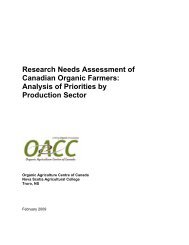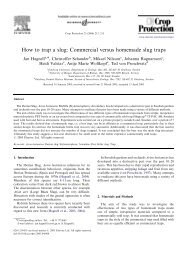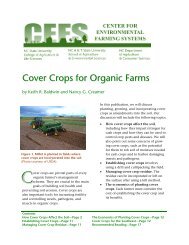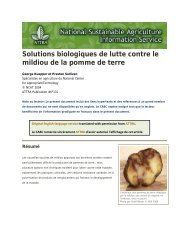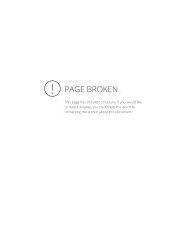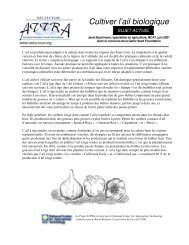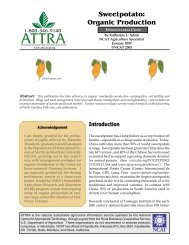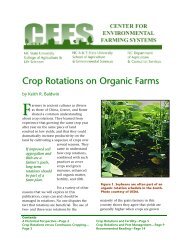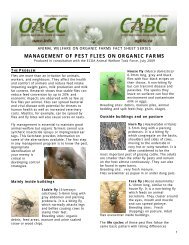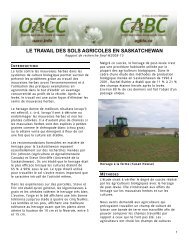Recommended Animal Handling Guidelines and Audit Guide
Recommended Animal Handling Guidelines and Audit Guide
Recommended Animal Handling Guidelines and Audit Guide
- No tags were found...
You also want an ePaper? Increase the reach of your titles
YUMPU automatically turns print PDFs into web optimized ePapers that Google loves.
<strong>Recommended</strong> <strong>Animal</strong> <strong>H<strong>and</strong>ling</strong> <strong><strong>Guide</strong>lines</strong> <strong>and</strong> <strong>Audit</strong> <strong>Guide</strong> 2007 EditionScoring of Very Small PlantsSmall beef plants that process 25 or fewer beef cattle per hour may need adjustments in scoringdue to small sample size <strong>and</strong> differences in cattle behavior. Ideally 50 or more cattle should bescored, but this is often not practical in a plant that processes 5 to 10 cattle per hour.For a plant’s own internal audit, data should be pooled <strong>and</strong> averaged. Pooled small data setscan be scored per the American Meat Institute Foundation’s guidelines.When an outside auditor audits a small plant, sometimes only 10 to 20 cattle are observed. Ifone stun were missed, the plant would not achieve the 95 percent acceptable score. If passingor failing the stunning audit is based on a single small data set, one miss should be permitted.However, on pooled data, the 95 percent first shot efficacy score must be maintained. On smalldata sets of 10 to 20 cattle, all cattle (100 percent) must be rendered insensible prior tohoisting to pass the audit.In very small beef plants with line speeds of less than 25 cattle per hour, the animals may st<strong>and</strong>for long periods in the single file chute (race) <strong>and</strong> “talk” to each other. Their “talking” vocalizationsare not scored. “Talking” vocalizations in the h<strong>and</strong>ling system occur more often at slowline speeds. An animal should be scored as a vocalizer if the vocalization is associated with:1. Poking with an electric prod.2. Slipping or falling.3. Vocalizing in the stun box.4. Poking by sharp edges on equipment.5. Hitting with a gate.6. Excessive pressure from a restraint device.7. Missed stuns.8. Physical abuse by a person.9. Signs of agitation such as rearing, jumping, repeated backing up in the single file race orfrantic attempts to escape.10. Isolation of a single animal away from other cattle.ConclusionAn acceptable level of animal welfare can be maintained if scores for the core criteria forstunning, animal insensibility, slipping <strong>and</strong> falling, vocalization <strong>and</strong> electric prod use are inthe acceptable range. Scoring performance on these variables is simple <strong>and</strong> easy to dounder commercial plant conditions.In conclusion, managers must be committed to good animal welfare. Plants that have managerswho insist on good h<strong>and</strong>ling <strong>and</strong> stunning practices tend to have better results. Positive <strong>and</strong>negative feedback also is very important. You manage the things that you measure, which is whyauditing is important. Maintaining good h<strong>and</strong>ling <strong>and</strong> stunning practices requires continuousmeasurement, monitoring <strong>and</strong> management.49AMI<strong>H<strong>and</strong>ling</strong>Slaughter<strong><strong>Guide</strong>lines</strong>07.1AMIJune 11, 2007



